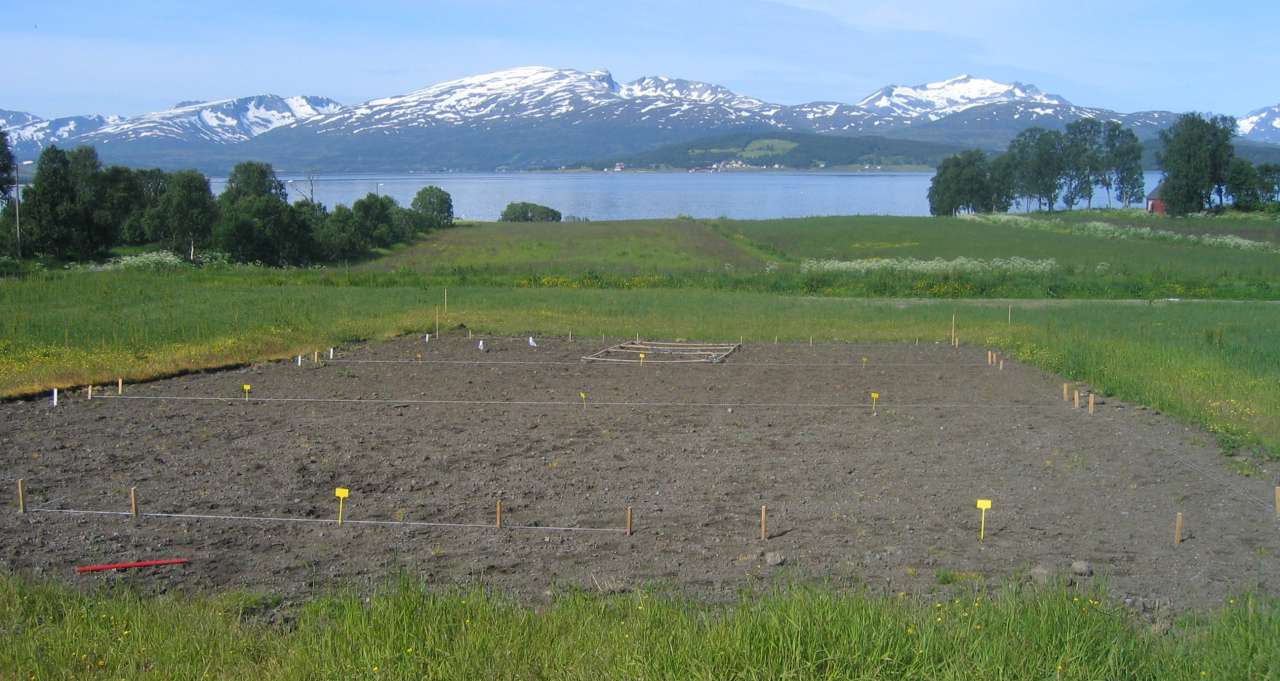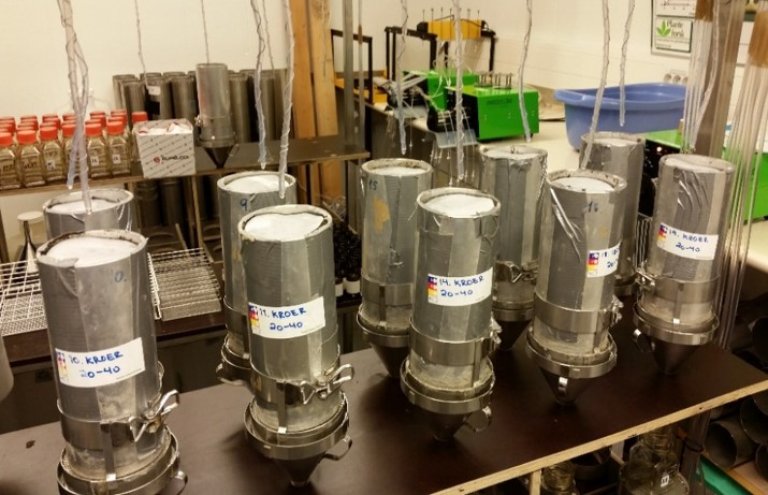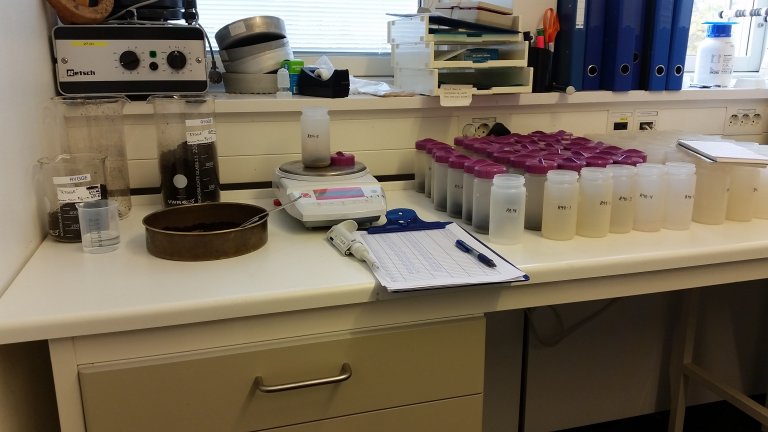The fate of pesticides in soil

Field trials at Holt, NIBIO Tromsø.
Photo: Rolf Johansen
Pesticides are used to combat various pests (insects, fungi and weeds) in agriculture. These substances have been shown to be transported away from the areas they have been used and it is therefore important to know how they behave and what happens to them after they are sprayed into a field or crop. NIBIO has the facilities, equipment, and expertise to investigate the fate of pesticides in nature, both in the laboratory and in the field.
Measuring the sorption of pesticides in soil
Pesticides and other organic compounds that come into contact with soil will interact with the soil to a greater or lesser extent. Water-soluble substances will mostly be in the water phase of the soil, while other substances can bind to particles in the soil, such as clay particles or organic matter. Substances that bind very strongly to soil particles may become more or less inaccessible to microbial degradation.
In a sorption study (batch equilibrium study) we investigate how the amount of a substance is distributed between the particle phase and the water phase in a solution, and thus a sorption coefficient can be calculated (Kd, Kf, Koc). In order to be able to say something about what can happen to a pesticide, or other substances, in soil, it is therefore important to estimate these sorption coefficients. Such studies are also an important data requirement in connection with the approval and registration of pesticides.
NIBIO's Department of Pesticides and Natural Chemistry performs sorption experiments in accordance with OECD Guideline 106 (2000) (Link in left column). Some compounds bind more strongly to soil over time, which can cause both transport and decomposition to vary over time. This phenomenon, so-called "aged sorption", is implemented in the methodology for risk assessment of pesticides in the EU and NIBIO can also perform studies on this according to EU guidelines (Link in left column).
Measuring pesticide leaching into soil
Pesticides, or other chemicals, can be transported in soil, either solved in the water phase, or sorbed to soil particles. These substances are then transported through the soil, either via a slow transport process where they follow the flow of water as it seeps through small spaces between the particles, so-called matrix flow through micropores in the soil, or a much faster transport by water currents that pass through earthworm burrows/channels, root passages and cracks, so-called preferential flow through macropores.
Different substances can be transported in different ways depending on, among other things, their sorption properties to different materials in soil. The type of soil under consideration can therefore have a significant impact on the transport of various chemicals. In addition, precipitation and temperature may affect transport through the soil.
NIBIO has laboratory facilities to investigate the transport of chemicals through soil. We have a well-equipped lysimeter laboratory with columns of various dimensions and materials, peristaltic pumps for irrigation, and possibilities for regulating the temperature in the room. In this laboratory, we can then investigate the transport of pesticides, and other chemicals, down through a soil column under controlled conditions.
The soil samples are either taken out as intact soil columns, with a soil drill, or the soil is packed in the columns manually. Leachate from the soil samples is analyzed for content of the chemicals you are looking for using LC-MS/MS or GC-MS.
Contacts

Links
OECD Guideline 106 (2000) Guidance on how aged sorption studies for pesticides should be conducted, analysed and used in regulatory assessments (EU, 2020)


Measuring pesticide degradation and half-life in soil
Pesticides and other organic compounds in soil degrade and/or dissipates at different rates depending on the properties of the substance and the microbial activity in the soil. The substances can also be degraded chemically and or physically by photolysis in sunlight or hydrolysis in water.
The degradation rate is expressed as DegT50 value; A half-life that describes the number of days it takes for the substance concentration in the soil to be halved by the process of microbial degradation/mineralization. If the disappearance is affected by other loss processes, e.g. leaching, the half-life is expressed as a disappearance time DT50 (Dissipation Time).
NIBIO uses the FOCUS guideline Sanco/10058/2005 for laboratory degradation studies and the EFSA guideline (2014) and the OECD guideline (2016) for degradation studies/disappearance studies in the field (All links on the left).
A degradation study in the laboratory typically takes place over 100 days, and soil samples are taken at least 8 times throughout the period. The soil samples are extracted for pesticide content and their degradation products, and the concentration is measured using LC-MS/MS or GC-MS/MS. The half-lives are calculated by testing different models of degradation kinetics using Tessella CAKE software. In principle, the methodology can be applied to all substances whose half-lives are investigated.
Contacts

